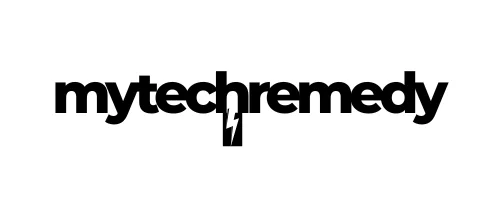Unpacking Amazon Wholesale: A Strategic Guide to Business Growth
As you look to expand your e-commerce business, understanding different sales channels becomes crucial. One such channel is Amazon Wholesale, a platform that holds immense potential for scaling your operations. By diving into the nuances of this strategy, you can position your business for significant growth. For a more in-depth exploration of this topic, check out the amazon wholesale guide.
Why Consider Amazon Wholesale?
Amazon Wholesale offers a distinct path compared to traditional retail and private label selling. By purchasing products in bulk directly from manufacturers or distributors and selling them on Amazon, you can capitalize on established brands’ existing demand. This method reduces the time and effort required to build brand recognition from scratch.
Building a Strategic Framework
Your success in Amazon Wholesale hinges on a strategic framework. Start by researching high-demand products with steady sales histories. Use tools like Jungle Scout or Helium 10 to analyze market trends and competition. Aim to identify products with a consistent sales rank and moderate competition, which can provide a sweet spot for entry.
Negotiating with Suppliers
Building strong relationships with suppliers is key. Negotiating favorable terms can increase your profit margins and ensure a stable supply chain. Communicate openly about your business goals and volume potential to secure better pricing and exclusive deals.
Optimizing Listings for Success
Your product listings are your storefront on Amazon. Optimize them with clear, engaging copy and high-quality images. Focus on key product features and benefits, and use keywords strategically to improve search visibility. Enhanced brand content can further differentiate your offerings from competitors.
Leveraging Data for Growth
Data-driven decision-making is vital. Use Amazon’s analytics tools to track performance metrics like sales velocity, conversion rates, and customer reviews. Regular analysis helps you refine your marketing strategies and product selection, ensuring you stay ahead in the competitive landscape.
Understanding the Financial Implications
Amazon Wholesale involves specific financial considerations. While initial investments in inventory can be substantial, the potential for high-volume sales can offer lucrative returns. Develop a financial plan that accounts for inventory costs, Amazon fees, and marketing expenses. Continuous monitoring of cash flow and profit margins will aid in sustainable growth.
Actionable Recommendations for Aspiring Wholesale Sellers
- Start Small: Begin with a limited product range to test the waters and understand market dynamics.
- Focus on Relationships: Cultivate strong supplier connections to gain competitive advantages.
- Leverage Technology: Use analytics tools to guide your decisions and optimize operations.
- Monitor Financials: Keep a close eye on your finances to maintain profitability and scalability.
- Continuous Learning: Stay informed about industry trends and Amazon policy changes to adapt swiftly. For a broader perspective, explore Understanding Amazon Vendor Central: A Complete Guide.
By embracing these strategies, you’ll not only enhance your understanding of the Amazon Wholesale model but also position your business for robust growth. The pathway to success involves a blend of strategic planning, technological leverage, and savvy financial management. Dive into the journey, and let your business thrive.
FAQs
What is Amazon Wholesale?
Amazon wholesale refers to the practice of purchasing products in bulk directly from manufacturers or distributors and reselling them on Amazon at a higher price to earn a profit. Wholesale sellers typically buy inventory at discounted prices and sell it through Amazon’s marketplace, using their fulfillment options (either Fulfilled by Amazon (FBA) or Fulfilled by Merchant (FBM)) to reach customers.
What is the Difference Between Amazon FBA and Wholesale?
Amazon FBA (Fulfilled by Amazon):
-
Involves selling your products through Amazon’s platform, while Amazon handles storage, packaging, and shipping.
-
You send your products to Amazon’s fulfillment centers, and Amazon handles most aspects of the fulfillment process.
Amazon Wholesale:
-
Refers to buying products in bulk directly from manufacturers or wholesalers at a discounted rate and reselling them on Amazon.
-
Unlike FBA, wholesale businesses can use either FBA or FBM for order fulfillment. The primary difference is that wholesale businesses do not create products themselves; they purchase existing products to sell.
What are the Requirements for Amazon Wholesale Business?
To start an Amazon wholesale business, you need to meet several requirements:
1. Amazon Seller Account: You must create a Professional Amazon Seller account to sell wholesale products.
2. Source Suppliers: Establish relationships with manufacturers or wholesalers to get products at bulk prices.
3. Inventory Management: Maintain an inventory management system to track product stock and reorder supplies as needed.
4. Sales Tax ID: A sales tax permit may be required depending on your state, as you’ll need to purchase products tax-exempt.
5. Amazon Policies: Comply with Amazon’s seller policies, including product authenticity and listing requirements.
6. Capital: You’ll need enough capital to purchase inventory upfront and cover other business expenses.
Is Wholesale on Amazon Profitable?
Yes, wholesale on Amazon can be profitable, but success depends on various factors, such as:
-
Product Selection: Choosing the right products that have high demand but low competition is key to success.
-
Margin Management: Your profit margins will depend on the wholesale pricing you get and the price you can sell the products for after factoring in Amazon fees and shipping costs.
-
Competition: The wholesale market on Amazon can be competitive, especially for popular products. To stay profitable, you’ll need to differentiate your listings through strong branding, customer service, and efficient marketing strategies.
-
Amazon Fees: Factor in Amazon’s fees (such as FBA fees, referral fees, etc.) when calculating profitability. Optimizing these costs can improve your profit margins.
Checkout ProductScope AI’s Studio (and get 200 free studio credits)
